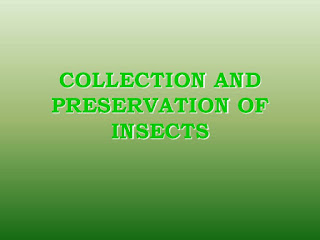Insect metamorphosis
METAMORPHOSIS IN INSECTS
Metamorphosis
:
Metamorphosis (meta = change; morph = form) is the cyclic and sequential
developmental process occurring in the form of an insect from hatching
(eclosion) to adult (imago) stage. It involves growth and development. Growth
is increase in size of the body as a whole but development implies differential
growth.
Stadium:
The time between two consecutive ecdyses.
Instar:
The age and form of insects during a particular stadium.
Types of metamorphosis
Ametabola : (Apterigotes: eg. Silverfish)
There
is no distinct external change in the form of insects during its life cycle,
except in size. Young ones or juviniles resemble like the adults.Both the
juvenile and adults will undergo several moultings. The juvenile and adult
occupies same habitate and have similar feeding habits. In protura, during each
moult in the juvenile stage, in addition of abdominal segments anterior to the
telson is witnessed and this is termed as anamorphosis.
Metabola: In this type, there are distinct
changes in growth, development, habit, habitat in the life stages of insects.
- Incomplete
metamorphosis:
these insects undergo simple metamorphosis, the immature stages lack fully
developed wings and genitalia and there is no inactive pupal stage. The
wings or wing buds develop externally (exopterygotes).
- Paurometabola. Eg. Grass hoppers, plant bugs.
- Thisis
simple type of metamorphosis
- The
immature stages are called nymphs that resemble the adults except in
size. They lack fully developed wings and genitalia.
- Both the nymphs and adults present in same habitat and have similar feeding habits.
- Hemimetabola. Eg: Dragonfly, Damselfly , Mayfly. (Exopterygotes)
- The
immature forms are called naiads and they differ in form, habitat and
habit from the adults. The naiads are aquatic, breathing through tracheal
gills and have external wing pads.
- Adult stages are aerial.
- It
is a complex metamorphosis and it is also called Holometabola.
- Immature
stages are called as larvae and it differ fully from the adult in form,
mouthparts,habitat and habits. They also undergo an inactive stage called
pupa (pl:pupae), from which the
adult emerges. The wing buds develop internally (Endopterygotes).
These insects undergo complete
metamorphosis, but the larval instars differ in form, feeding habit and
habitat.. The first instar larva is called triangulin and this type of
development is called hypermetamorphosis.





















Comments
Post a Comment